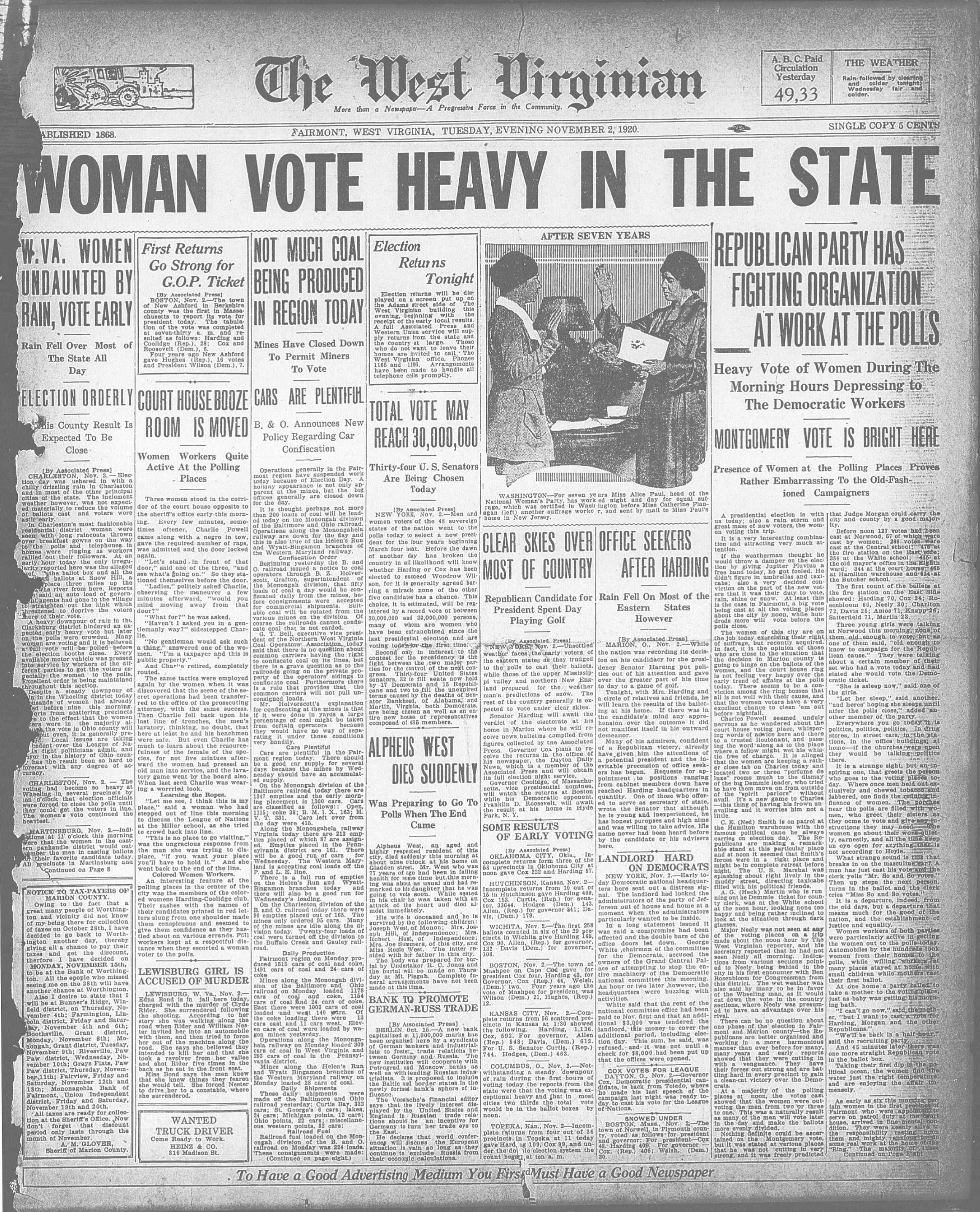Background
The Nineteenth Amendment to the Constitution, ratified on August 18, 1920, declared the right to vote could not be denied on the basis of sex. On Election Day 1920, ten million women voted, many for the first time in their lives. Local newspapers reported long lines of joyful first-time voters. Many towns changed the once male-dominated polling places into spaces apparently more inviting to women. Some places banned smoking, gave floors an extra wash, and provided chairs for the first time.
Despite all of this, there was cause for concern. Only one-third of eligible women voted that day. Men outvoted women five to three. Mississippi and Georgia blocked all women voters by closing registration of new voters before the amendment was ratified. Many suffragists were disappointed by the low turnout and the efforts to block women at the polls. They quickly turned their attention to encouraging voter registration and participation. The National American Women Suffrage Association was renamed the League of Women Voters. A new era of women-led activism began.
About the Document
This is the front page of a newspaper from Election Day 1920. West Virginia had no voting by women until the ratification of the Nineteenth Amendment. Even without reading the articles in detail, the significance of this day for West Virginia women is clear from the headline. A closer read provides further evidence of the role of women voters. Highlights include:
- The article in column one focuses on the high early turnout of women voters despite the bad weather.
- The last paragraph of the main article in column two describes a group of Black women voters at the polls.
- The end of the article in the seventh and eighth columns mentions women who worked on behalf of political parties to recruit more women to vote.
Vocabulary
- Nineteenth Amendment: The constitutional amendment that declared the right to vote could not be denied on the basis of sex; it was ratified in 1920.
- ratification: The process by which an amendment to the federal Constitution is approved or rejected by states.
Discussion Questions
- Election Day 1920 saw heavy turnout of women voters, but not as heavy as many suffragists hoped. Why do you think only one-third of eligible women participated? Do you think this should have been a day of celebration? Why or why not?
- At the bottom of column two, an article described a group of Black women voters. Why do you think the newspaper singled them out, and what does it tell you about the challenges Black women voters faced?
- Beyond voting, how else does this newspaper depict the involvement of women in the election? How did they leave their mark on Election Day 1920?
Suggested Activities
- APUSH Connection: 7.4: The Progressives
- Divide the front page into sections, using the bullet points in “About the Document” as a guide. Assign pairs or small groups to analyze just one portion of the front page and discuss how the paper describes this historic day for West Virginians.
- Compare this newspaper with the Congressional testimony of William Pickens on behalf of the NAACP. How does each document describe the experience of women before and during the election of 1920?
Themes
POWER AND POLITICS







